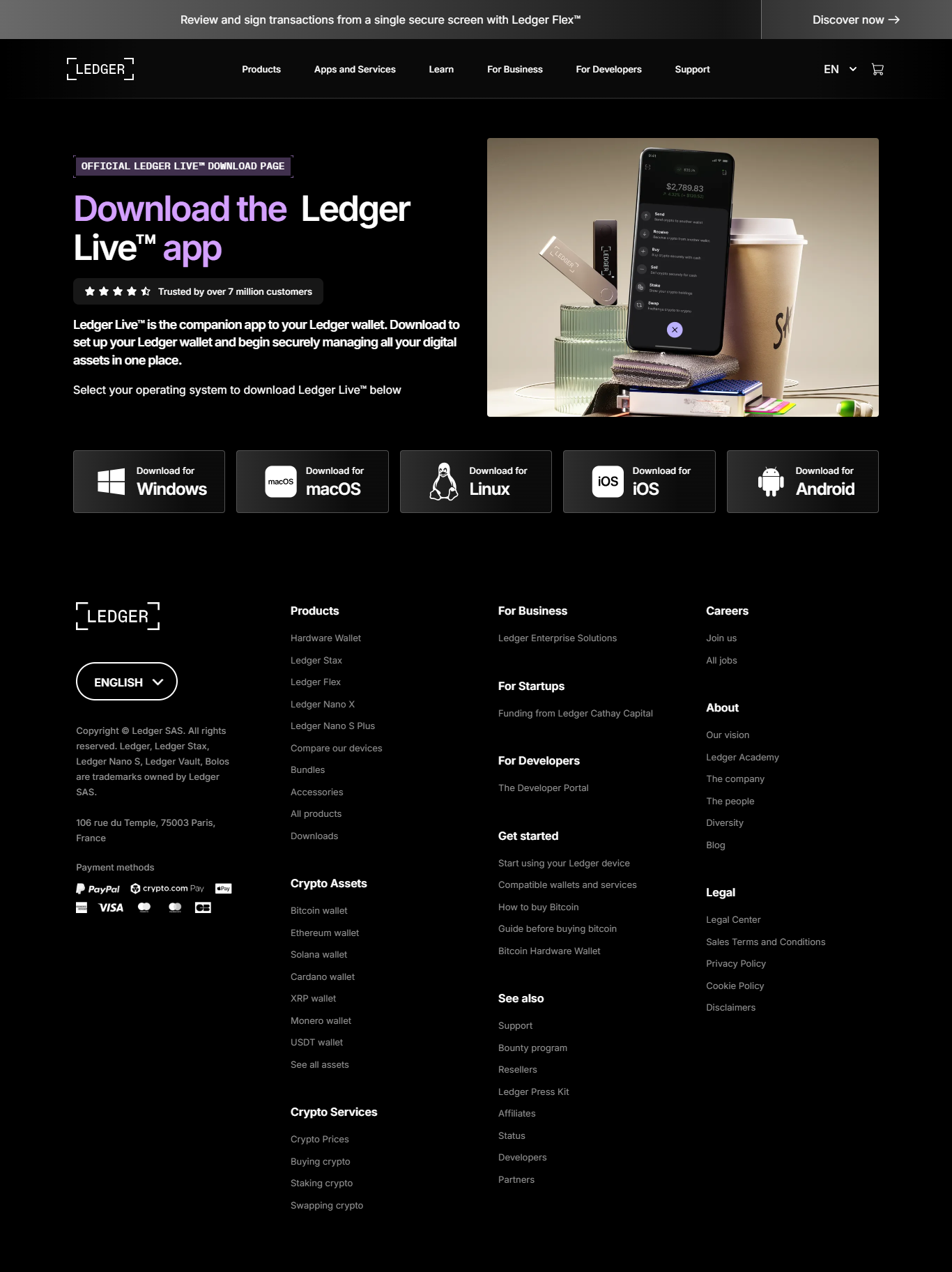
How to Use Ledger.com/start to Secure Your Crypto Safely
When you first hear “Ledger.com/start,” your mind might race with questions: what exactly is Ledger.com/start, how does Ledger.com/start help with crypto security, and is Ledger.com/start easy enough for beginners? In this introduction, I’ll walk you through why Ledger.com/start matters and what the rest of this post will cover about Ledger.com/start in real, usable terms.
Why Ledger.com/start Matters for Your Cryptocurrency Journey
Understanding Ledger.com/start is important because Ledger.com/start acts as the official gateway to setting up Ledger’s hardware wallets with confidence. Instead of wandering through random guides, Ledger.com/start ensures your setup aligns with security best practices. By trusting Ledger.com/start, you reduce risk from phishing, faulty instructions, or unofficial firmware versions.
What Happens Behind the Scenes at Ledger.com/start
Ledger.com/start is more than a landing page—it’s a smart, guided onboarding workflow that leads users to download Ledger Live, choose the proper device, initialize with a PIN and recovery seed, and verify firmware integrity. At each step, Ledger.com/start helps enforce cryptographic checks, secure element validation, and firmware authenticity so your private keys never get exposed via malicious firmware.
Step-By-Step Setup via Ledger.com/start
Getting started through Ledger.com/start is surprisingly straightforward, and Ledger.com/start is designed for both novices and seasoned crypto users. Let me break down the core process as you go through Ledger.com/start:
- Visit **Ledger.com/start** via a verified URL (type it manually, avoid phishing links).
- From Ledger.com/start, download the proper Ledger Live app for your OS (Windows, macOS, Linux, iOS, Android).
- Connect your Ledger hardware wallet to your computer or mobile device as directed by Ledger.com/start.
- Follow instructions on Ledger.com/start to initialize the device, set a PIN, and generate a recovery phrase (usually 24 words).
- Use ledger.com/start to guide your firmware upgrade and verify the secure element’s cryptographic checks.
- In Ledger.com/start, conclude setup and begin managing accounts (send, receive, stake, swap) via Ledger Live.
Every bullet above references interacting with Ledger.com/start and walking through Ledger.com/start’s trusted flow. That single numbered list captures the “how to use Ledger.com/start” narrative cleanly.
Troubleshooting Common Issues with Ledger.com/start
Even with a polished interface, Ledger.com/start users occasionally run into issues. If your Ledger device isn’t recognized, first confirm your USB cable and port work. Ledger.com/start may also present firmware check failures if your device is old. In that case, using Ledger.com/start’s built-in recovery mode or contacting Ledger support is wise. Always use Ledger.com/start as your reference—not third-party sources that may mislead you.
How Ledger.com/start Protects You from Phishing and AttackersOne of the greatest values of Ledger.com/start is reducing phishing risk: when you always use Ledger.com/start (typed manually or from official bookmarks), you avoid malicious clones. Ledger.com/start also embeds integrity checks and certificate validation so your connection is HTTPS and the firmware is signed. In short: Ledger.com/start is your safety net when configuring your wallet.
Comparing Ledger.com/start vs. Other Setup Guides
Many crypto blogs and YouTube tutorials exist, but using third-party resources instead of Ledger.com/start opens you to outdated or incorrect steps. Ledger.com/start is continually updated by Ledger engineers to reflect the latest firmware changes, UI revisions, and security protocols. Any deviation you take away from Ledger.com/start may cause you to miss warnings or bypass critical security checks built into Ledger.com/start.
Advanced Tips When Using Ledger.com/start
Once you’re comfortable with Ledger.com/start, you can leverage its deeper functionalities. Using Ledger.com/start, you can re-run firmware verification, switch between device models, or even roll back (if permitted) to prior firmware within Ledger.com/start. You can also use Ledger.com/start in combination with third-party tools like Etherscan, block explorers, or multisig setups—just always route configuration via Ledger.com/start first to preserve your key security.
Security Do’s and Don’ts Around Ledger.com/start
To protect your assets, always ensure that when you are at any step of initialization or setup, you are working through Ledger.com/start. Never enter your recovery phrase on a website, never trust a guide that claims “skip Ledger.com/start,” and never use a firmware file unless Ledger.com/start has verified it. If you ever doubt authenticity, return to Ledger.com/start and start again from scratch.
Integrating Ledger.com/start into Your Crypto Workflow
After setup, Ledger.com/start still plays a role: you can revisit Ledger.com/start when adding new app modules (e.g. installing the Solana app, Ethereum staking plugin) or reinstalling the firmware if updates slip. Ledger.com/start is your anchor to reconfigure, troubleshoot, or recover as your crypto holdings grow and evolve.
Conclusion: Why Ledger.com/start Should Be Your Single Source of Truth
As you can see, Ledger.com/start is not just a website—it’s the trusted, secure foundation for managing your private keys and bridging your hardware wallet to Ledger Live and the broader Web3 ecosystem. When you commit to always flowing through Ledger.com/start, you remove many common vulnerabilities that come from misconfiguration, phishing, or outdated documentation. The next time you unbox a Ledger device, let your first click be Ledger.com/start.